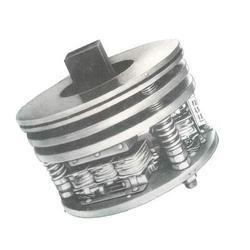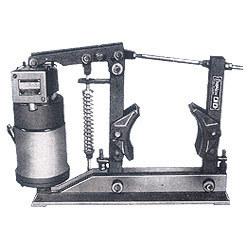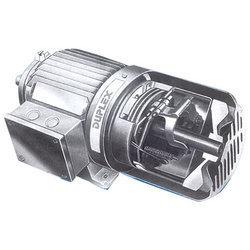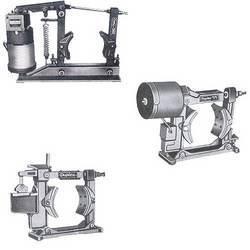Duplex Engineering Works
Product Range
Fact Sheet
- Location:Maharashtra, India
- Year of Establishment:1982
- Business Type:Manufacturer, Exporter
- Main Products: Industrial Vibrators, D.C Contractors
- Reviews & Rating:
Get Verified, Sell more with
- Buyer's trust
- Faster conversions
- Better Rankings
- More
Its Free
Verify NowA.C.E.M. Disc Brakes
A disc brake slows a vehicle by applying the force generated by the brake cylinder to the brake disc.
- FOB PriceNA
- Min Order QuantityNA
- Payment TermsNA
Other Details
We offer A C E M disk brakes to our clients.
Function
A disc brake slows a vehicle by applying the force generated by the brake cylinder to the brake disc. Knorr-Bremse has set new standards with its pneumatic disc brake for commercial vehicles with gross weights of 6 t to 44 t or more. The advantages over conventional systems are: reduced weight, compact design, even pad wear, ease of servicing, reduced cost and enhanced safety.
Application
Knorr-Bremse's position as the leading supplier of disc brakes and complete braking systems for commercial vehicles has been further consolidated by further technological developments such as monoblock brake calipers, splined discs with intermediate elements and split discs for easier disc replacement.
INDUSTRIAL ELECTRO-MAGNETIC (A. C.) DISC BRAKE
Very fast operating solenoid actuated. These are A C. Disc type spring loaded brakes of failsate design mounted on the shaft extension of the motor on non driving end, no extra foundation is necessary.
These work as on Electromagnetic Principle and consists
1) Electromagnetic fixed to the end plate, 2) Floating plate on one side of which is fixed on the armature
3) A friction disc with a square hole or internal spline at its centre.
4) Mounting plate
5) Square shaft, or spline shaft.
The square piece is fixed on the motor shaft, the friction disc rotates with the motor shaft and it also has an axial movement on the square shaft. Due to the spring pressure the friction disc is held tight between the mounting plate and the floating plate and when the magnet is energised the magnet attracts the floating plate against the spring pressure and the brake is released
These Brakes are used largely on Hoists, Cranes and Winches in Paper, Rubber, Steel, Textile, Cement, Minning Industries and also in Machine Tools, Printing Machiners etc.
SELECTION OF BRAKES
The 'Torque' and 'Rime' are the two important deciding factors in selecting the specific size brake if the braking torque is equal to the running torque, the brake will stop the moving mechanism atleast as fast as the time the motor took to bring it to the speed.
In case of cranes, hoists, lifts, ete the brake is provided to hold the mass in the same position when the motor is off. Taking into account some fluctuation in the line voltage the some losses in mechanism, about 1.5 time braking torque should be provided while selecting brakes on above kind of machines. But when instantaneous braking is required, the braking torque should be 2 to 3 times of the running torque. Moment of inertia and frequency of braking are also important factors to be considered.
Formula : Given below is a guide for initial selection in an average application.
975 x kw (of drividg motor)
RUNNING T(kgfm) = TORQUE : R. P. M. (of the shaft on which the brake is to be fitted)
Images








